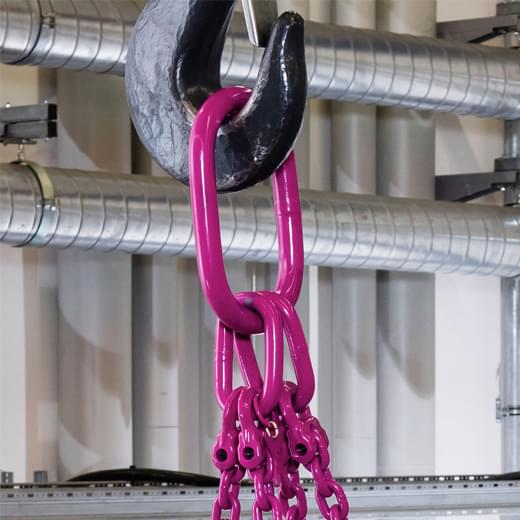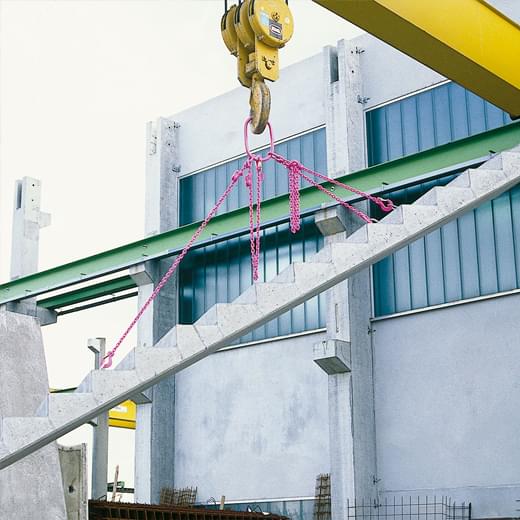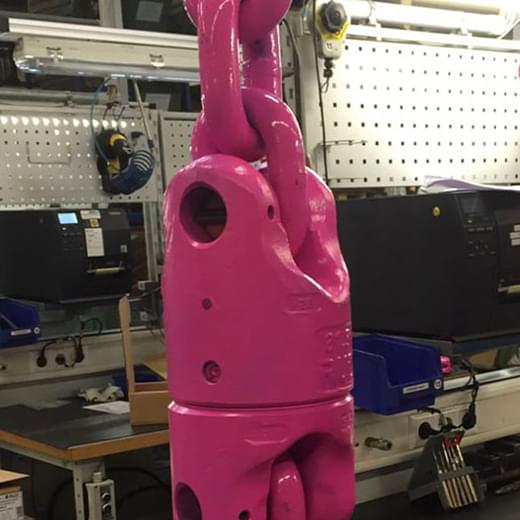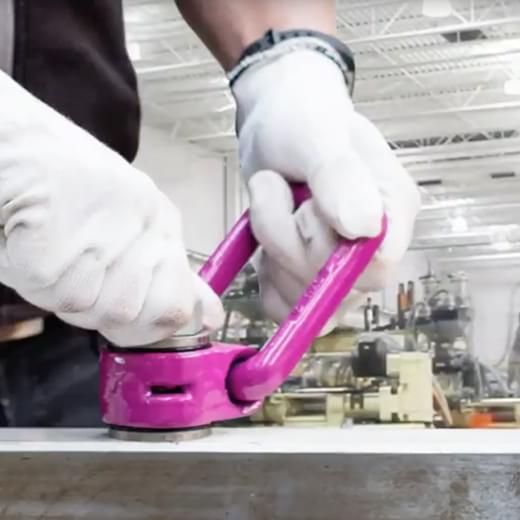RUD lifting means have been guaranteeing safety during the lifting and moving of loads for many decades. In 1994, RUD was the first chain factory to be awarded approval by the employers’ liability insurance association for VIP special grade (Grade 10) with up to 30 % greater WLL than Grade 8. In addition, RUD was the first chain factory to be awarded approval for round steel chains of Grade 12 (ICE 120) from the employers’ liability insurance association in 2007.
Would you like to assemble suspensions quickly and easily?
The RUD lifting means configurator.
With the new RUD lifting means configurator, you will find the perfect chain suspension for any lifting application online in six easy steps. Quick, safe and convenient. The web application takes into account all the factors that are important for the design of your suspension, step by step. View your completed chain suspension in 3D and benefit from valuable extra knowledge.
Register now and benefit free of charge!What is a chain suspension?
In the world of lifting means, chain suspensions form the connection between the sling and the load. They are made up of several components. Suspensions can be purchased fully configured – depending on the weight, size and shape of the load.
The components of a chain suspension are:
- the master link.
- the chain (in one or more strands).
- the end component (e.g. hook).
- any connecting elements (to connect two chains).
- any shortening elements (to shorten chains).
- any additional elements (e.g. balancer).
What are the advantages of a chain suspension when lifting?
Chain suspensions can be configured very flexibly according to the load to be lifted. The variety of available components and WLLs is high, allowing a large number of lifting tasks to be solved with one suspension.
For example, the chains of a suspension can be easily and safely extended or shortened using special components. This allows the length of the chain strands to be adapted to the shape, weight distribution or centre of gravity of the load.
Approval.
If you assemble suspensions yourself, you may only use lifting chains. Lashing chains are not permitted for lifting applications, as they have a different safety factor to lifting chains.
The standards DIN EN 818, DIN EN 1677 and E DIN 21061 guarantee a maximum of safety in the manufacture of chains. Lifting chains that are approved and tested in accordance with these international standards are authorised by the German Social Accident Insurance (DGUV) to bear the so-called H-stamp. Do you value quality and safety? Then check whether your lifting chain has an H-stamp.
Identification.
Every lifting chain is given an identification tag by the manufacturer, which must be permanently fixed to the chain. Among other things, it provides information on the WLL, the nominal diameter and the grade. If this tag is missing, you must not use the chain, since important characteristic values of the chain – and thus of the suspension – cannot be determined. VIP and ICE identification tags from RUD also serve as chain gauges.
Safety factor.
For lifting chains, the safety factor 4 is required by law. This means that the manufacturer must prove that the breaking strength of the lifting chain is at least four times its working load limit (WLL).
Incidentally, since wire cables and textile lifting means have a lower elongation under load and thus a lower energy absorption capacity than lifting chains, higher safety factors (5 or 7) apply to them.
Configuration of a chain suspension: what questions do you need to answer in advance?
1. What load (weight) is to be lifted with the chain suspension?
The most important factor that you need to be aware of when choosing the components.
2. How many strands should the suspension have?
This depends on the lifting options that are present on the load.
3. Which usable length should the suspension have?
It depends on the hall height, the application height and the size of the load.
4. How big is the distance to the lifting points used?
It has an effect on the angle of inclination β of the suspension.
5. Where is the centre of gravity of the load?
Symmetrical and asymmetric shapes place different requirements on the suspension used.
6. Does it make sense to use an endless chain?
It can, for example, be used if a load does not have any lifting points.
7. In which working environment should the suspension be used?
Extreme operating temperatures or harsh environments require special materials –
e.g. RUD VIP or ICE components.
Attention! According to DIN EN 818, all the components and lifting chains in a suspension must always have the same nominal thickness and the same grade (do not combine ICE and VIP). In addition, components from different manufacturers must not be combined for safety reasons, as the connection systems sometimes differ considerably.
Chain suspensions – what you should never do:
- use a chain without DGUV approval and a tag.
- combine chains of varying nominal thickness/WLL.
- knot chains to shorten them. load twisted chains.
- drag chains over the ground.
- not protect chains from loads with sharp edges.
- use hoist chains to wrap around loads.
Grade 120 (ICE = Innovative Chain Evolution):
- Same WLL with smaller nominal thickness than Grade 80.
- Chain dimension from 4 – 16 mm.
- WLL from 0.8 to 35 t.
- ICE-PINK powder coating.
- Extremely temperature resistant from –60 °C to +300 °C.
- Heat indicator (change from 200 °C)
Grade 100 (VIP)
- 30 % higher WLL than Grade 80.
- Chain dimension from 4 – 28 mm
- WLL from 0.6 to 126 t.
- VIP-PINK powder coating.
- Extremely temperature resistant from –40 °C to +380 °C.
- Heat indicator (change from 200 °C).





